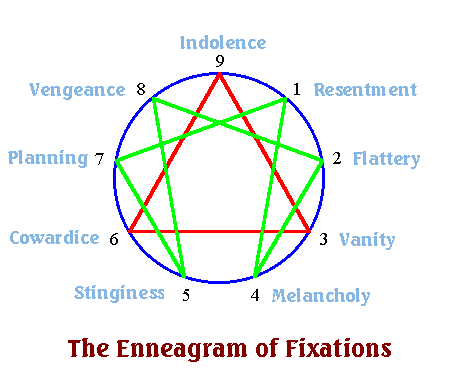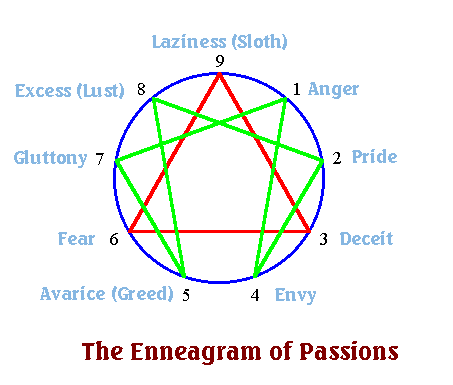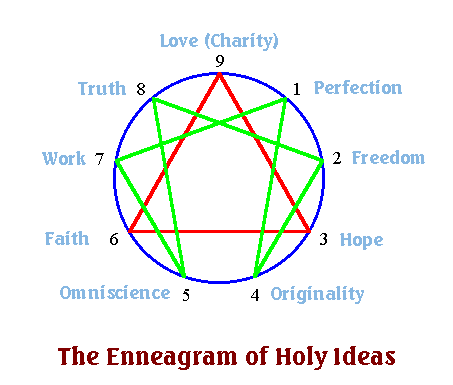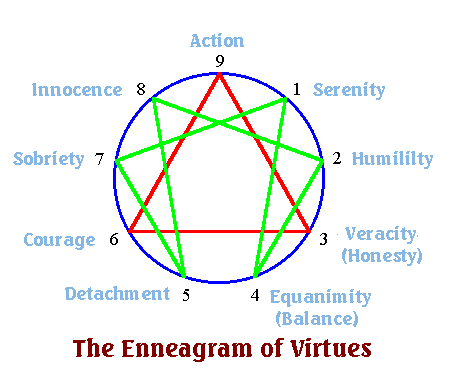The False Personality
 Our goal is to understand our essential nature - those higher aspects of personality that make for a better human being and a better world. Most of us are aware of moments of great happiness and joy, but these states seem to come and go without warning. Instead, we are mostly conscious of our own suffering and the suffering of others. When I speak about suffering, I am not just referring to illness, old age, pain, sorrow, misery, separation from loved ones, emotional hurt and other things that we ordinarily think of suffering. I am also talking about suffering in the sense of not getting what we want or getting what we don't want. Furthermore, I don't want to forget the suffering that arises out of the passing away of happiness and joy to less intense states.
Our goal is to understand our essential nature - those higher aspects of personality that make for a better human being and a better world. Most of us are aware of moments of great happiness and joy, but these states seem to come and go without warning. Instead, we are mostly conscious of our own suffering and the suffering of others. When I speak about suffering, I am not just referring to illness, old age, pain, sorrow, misery, separation from loved ones, emotional hurt and other things that we ordinarily think of suffering. I am also talking about suffering in the sense of not getting what we want or getting what we don't want. Furthermore, I don't want to forget the suffering that arises out of the passing away of happiness and joy to less intense states.
Whether it is joy or suffering, our moods seems to change without notice. We seem to be caught in a never-ending struggle to keep our heads above water and keep the bill collectors away from the front door.
I see the development of essence as the path out of this world of suffering. To get there, we have to start somewhere, and the place we have to start is what we might call our "false personality". What I mean by "false" is that we have learned to suppress our inherent essential nature in order to survive in our families, neighborhoods and society. Exhibition of essential qualities resulted in leaving us vulnerable to attack, which inevitably came. We learned to adopt personality aspects in order to protect ourselves from the outside world.
The Enneagram
 To understand the characteristics of the false personality we shall be looking at a system of nine personality types called the enneagram. The word enneagram is derived from two Greek words, enne, meaning nine and grammos, meaning points. The enneagram is an ancient system that has been brought into the foreground of modern psychological thinking by such great minds as Oscar Ichaso, Claudio Naranjo, M. D., and my teacher, Helen Palmer. My goal is not to make a complete presentation of the enneagram of personality, as this has been excellently done in Helen's book, The Enneagram, The Definitive Guide to the Ancient System for Understanding Yourself and the Others in Your Life, Harper & Row, publishers, San Francisco, 1988. Rather, I wish to present a small précis of each point in order for us to understand how the higher aspects of essence relate to personality issues, and how we might be able to transform these personality issues into essential qualities.
To understand the characteristics of the false personality we shall be looking at a system of nine personality types called the enneagram. The word enneagram is derived from two Greek words, enne, meaning nine and grammos, meaning points. The enneagram is an ancient system that has been brought into the foreground of modern psychological thinking by such great minds as Oscar Ichaso, Claudio Naranjo, M. D., and my teacher, Helen Palmer. My goal is not to make a complete presentation of the enneagram of personality, as this has been excellently done in Helen's book, The Enneagram, The Definitive Guide to the Ancient System for Understanding Yourself and the Others in Your Life, Harper & Row, publishers, San Francisco, 1988. Rather, I wish to present a small précis of each point in order for us to understand how the higher aspects of essence relate to personality issues, and how we might be able to transform these personality issues into essential qualities.
The best way to learn the enneagram is in a setting in which a teacher interviews panelists who know their types. This is the oral teaching tradition which has the added benefit of being able to demonstrate the qualities of type in a classroom environment. The second best way to learn the enneagram is from video taped interviews of the nine types. While this method lacks the spontaneity of a classroom or lecture situation, it still affords the expression of type through visual as well as auditory means. So, we are left here with the third best way to learn the enneagram: reading interviews with people who have been exposed to the enneagram in a controlled environment with a specific goal in mind.
What I like about the teaching of the enneagram is that it allows us to start from the chief concerns and preoccupations of our type and work with it through self-observation. We have personality concerns which occupy our minds and give rise to our emotional states. There is a lot of energy in these preoccupations, and through self-observation practices, we can utilize all of the energy in the system in a transformational way to bring about the end of suffering and achievement of inner states where essential qualities emerge as a natural consequence.
Just as there are nine aspects of personality described by the nine points on the enneagram, there are nine aspects of essence. We want to develop the nine aspects of essence in subsequent articles as a natural consequence of self-observation practices from the nine concerns of the personality.
The structure of the enneagram of personality is presented in the diagram above. The first thing to notice about it is the central triangle connecting points 3, 6 and 9. These points represent the "core" personalities from which the surrounding points or "wings" derive their primary concerns. The wings are connected by the lines 1-4-2-8-5-7-1. The lines represent movement from one point to another in response to changing conditions in life. I'll have more to say about movement in later articles. The core points are derived from the three corners of the inner triangle.
 |
 |

|

|
Within each type, there are core emotional and mental issues that preoccupy a person of a given type and cause great suffering. These preoccupations cause attention to be locked into specific patterns of behavior which produce difficulties for the self and others. According to the enneagram, the mental preoccupations for each type are traditionally called the fixations, which are illustrated above, and the emotional preoccupations are called the passions, which are shown above. Correspondingly, we shall see in another article that the higher aspects of each type are a set of higher mental and higher emotional characteristics, which are called the holy ideas and virtues, respectively. To jump the gun a little, these characteristics are presented above.
 |
The Enneagram: Understanding Yourself and the Others In Your Life
Helen Palmer It would be impossible for most of us to spend a day without coming into direct or indirect contact with dozens of people family, friends, people in the street, at the office, on television, in our fantasies and fears. Our relationships with other... [Read More...] |





